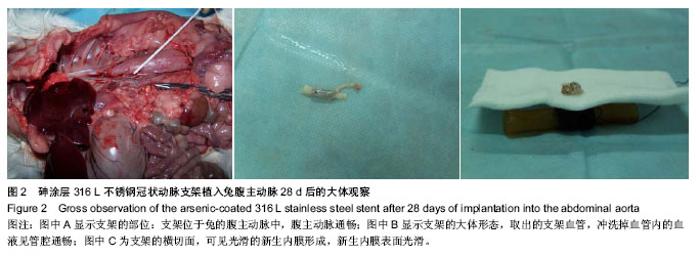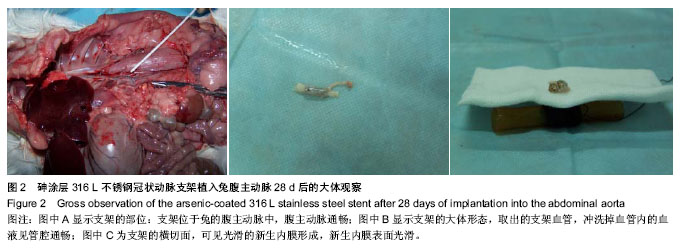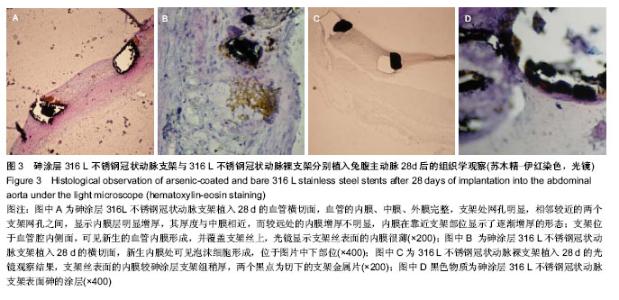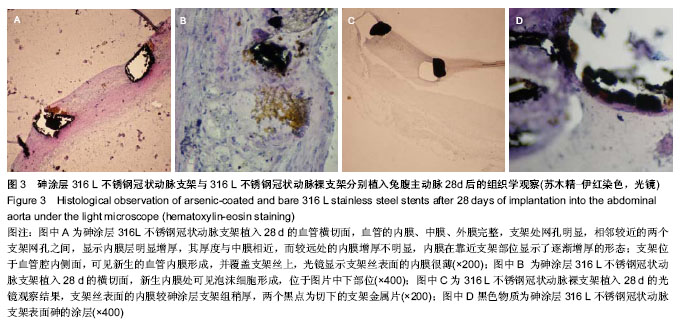| [1] Au WY,Lie AK,Chim CS,et al.Arsenic trioxide in comparison with chemotherapy and bone marrow transplantation for the treatment of relapsed acute promyelocytic leukaemia.Ann Onc.2003;14(5):752-757.
[2] 孙贵范.饮水型砷中毒发病机制研究进展[J].医学研究杂志,2007, 36(8):2-4.
[3] 孙贵范.深入研究慢性砷中毒的分子作用机制[J].中国地方病学杂志,2004,23(1):1-2.
[4] 曾芳,万锐,冯冬秀.硫化砷对白血病细胞的生长抑制及作用机制[J].白血病.淋巴瘤,2007,16(1):23-25.
[5] 苏中静,陈海滨,张锦堃.氧化砷诱导实体瘤细胞凋亡的研究进展[J].汕头大学医学院学报,2002,15(1):53-55.
[6] 杜敏,郭超,唐兆杰,等.亚砷酸治疗实体恶性肿瘤的毒性反应观察[J].药物不良反应杂志, 2004,6(5): 306-308.
[7] 蔡朋朋,王东红,李雪松,等.AS2O3及联合紫杉醇对胃癌MGC803细胞的生长和耐药性的影响[J].中国现代医生,2013, 51(29):4-6,10.
[8] 王绩英,王涛,曾锦荣,等.三氧化二砷联合非诺贝特对人肺癌A549细胞上皮间质转化及E-cadherin/Snail转化因子的影响[J].第三军医大学学报,2012,34(14):1406-1410.
[9] 陆佳昕,莫伟明,王兵 ,等.三氧化二砷对人乳腺髓样癌细胞的化疗增敏作用[J].中华实验外科杂志,2013,30(1):168.
[10] 王翠翠,呼彩莲,马伯林.三氧化二砷联合维生素C抑制肺腺癌细胞增殖及多西酚氧化酶表达的研究进展[J].中国肿瘤,2013, 22(4):279-283.
[11] 田文杰,葛均波,杨巍,等.三氧化二砷洗脱支架诱导猪损伤冠脉平滑肌细胞凋亡[J].中国分子心脏病学杂志,2009,9(1):19-23.
[12] 杨巍,葛均波,刘红玲,等.三氧化二砷洗脱支架防治兔血管损伤后再狭窄的实验研究[J].中华心血管病杂志,2007,36(4): F0003.
[13] 赵军礼,孙宝贵,温沁竹,等.三氧化二砷控释洗脱支架早期和非早期药物释放对犬冠状动脉支架术后再狭窄的影响[J].中华心血管病杂志,2007,35(6):571-574.
[14] 陆跃,沈雳,龚飞荣,等.新型肝素化聚氨酯涂层三氧化二砷洗脱支架的初步研究[J].上海医学,2012,35(3):185-188.
[15] 刘强,程晓农,徐红星,等.316L不锈钢支架和NiTi合金血管支架的血液相容性[J].中国组织工程研究与临床康复,2008,12(4) 735-738.
[16] 吴锋,孟改利,董兵辉,等.三种心血管支架用金属材料的表面特性与生物相容性[J].生物医学工程研究,2012,31(2):91-94.
[17] 杨柯,任玲,任伊宾.医用不锈钢研究新进展[J].中国医疗器械信息, 2012,18(7):14-17.
[18] 王伯沄,李玉松,黄高升,等.病理学技术[M].北京:人民卫生出版社,2000:137-138.
[19] Farmer JG,Johnson LR.Assessment of occupational exposure to inorganicarsenic based on urinary concentrations and speciation of arsenic.Br J Ind Med.1990;47:342-348.
[20] 李冰,陆春伟,孙贵范.不同砷化合物对血管内皮细胞毒性的研究[J].卫生研究,2006,35(6):700-702.
[21] 彭珊茁,蔡原.砷的生物学指标研究进展[J].中国工业医学杂志, 2006,19(3):168-171.
[22] 于鼎,王子慧,朱立元.砷诱导肝母细胞瘤Hep G2细胞凋亡机理研究[J].中华肿瘤杂志,2003,25(2):120-123.
[23] 张晨.雄黄对肝癌细胞系BEL-7402增生的影响[J].肝脏,2004, 9(2):112-113.
[24] 张莉,王玲,宋维华,等.三氧化二砷通过升高细胞内钙离子浓度介导肺癌细胞凋亡[J].中国药理学通报,2004,20(8):867-870.
[25] 伍钢,周云峰,陈同辛,等.三氧化二砷诱导神经母细胞瘤细胞凋亡机理的研究[J].中华儿科杂志,2000,38(7):452-453.
[26] 马丹,葛海燕.三氧化二砷对人结肠癌细胞增殖及凋亡的影响[J].重庆医学,2003,32(1):55-56.
[27] 张全彬,敖宁建,林梵,等.药物涂层支架及其存在问题[J].临床心血管病杂志,2011,27(6):403-404.
[28] Qiao Y,Bian Y,Yan X,et al.Efficacy and safety of sirolimus-eluting stents versus bare-metal stents in coronary artery disease patients with diabetes: a meta-analysis. Cardiovasc J Afr.2013;24(7):274-279.
[29] Ohlow MA,von Korn H,Gunkel O,et al.Incidence of adverse cardiac events 5 years after polymer-free sirolimus eluting stent implantation: Results from the prospective Bad Berka Yukon Choice™ registry.Catheter Cardiovasc Interv.2013.
[30] Simsek C,Räber L,Magro M,et al.Long-term outcome of the unrestricted use of everolimus-eluting stents compared to sirolimus-eluting stents and paclitaxel-eluting stents in diabetic patients: the Bern-Rotterdam diabetes cohort study. Int J Cardiol.2013;170(1):36-42.
[31] 孟庆杰,王阶,吴荣.冠心病介入术后的中医药干预进展[J].中国中药杂志,2008,33(8):962-965.
[32] 李慧,张延斌,宋豪,等.三氧化二砷诱导血管平滑肌细胞凋亡机制的研究[J].医学研究杂志,2010,39(10):79-81.
[33] 李秋伟.三氧化二砷对人宫颈癌HeLa细胞凋亡及其血管内皮生长因子表达的影响[J].广东医学院学报,2010,28(5):509.
[34] 吕慧,史艳芬,仲苓芝,等.亚砷酸钠对人脐静脉内皮细胞迁移、增殖的影响及其机制[J].江苏医药,2010,36(22):2663-2665.
[35] 李春江,刘健,张宏伟,等.镍钛自膨胀支架置入血管后细胞凋亡与增生的实验观察[J].中华老年心脑血管病杂志,2000,2(4): 256-258. |



